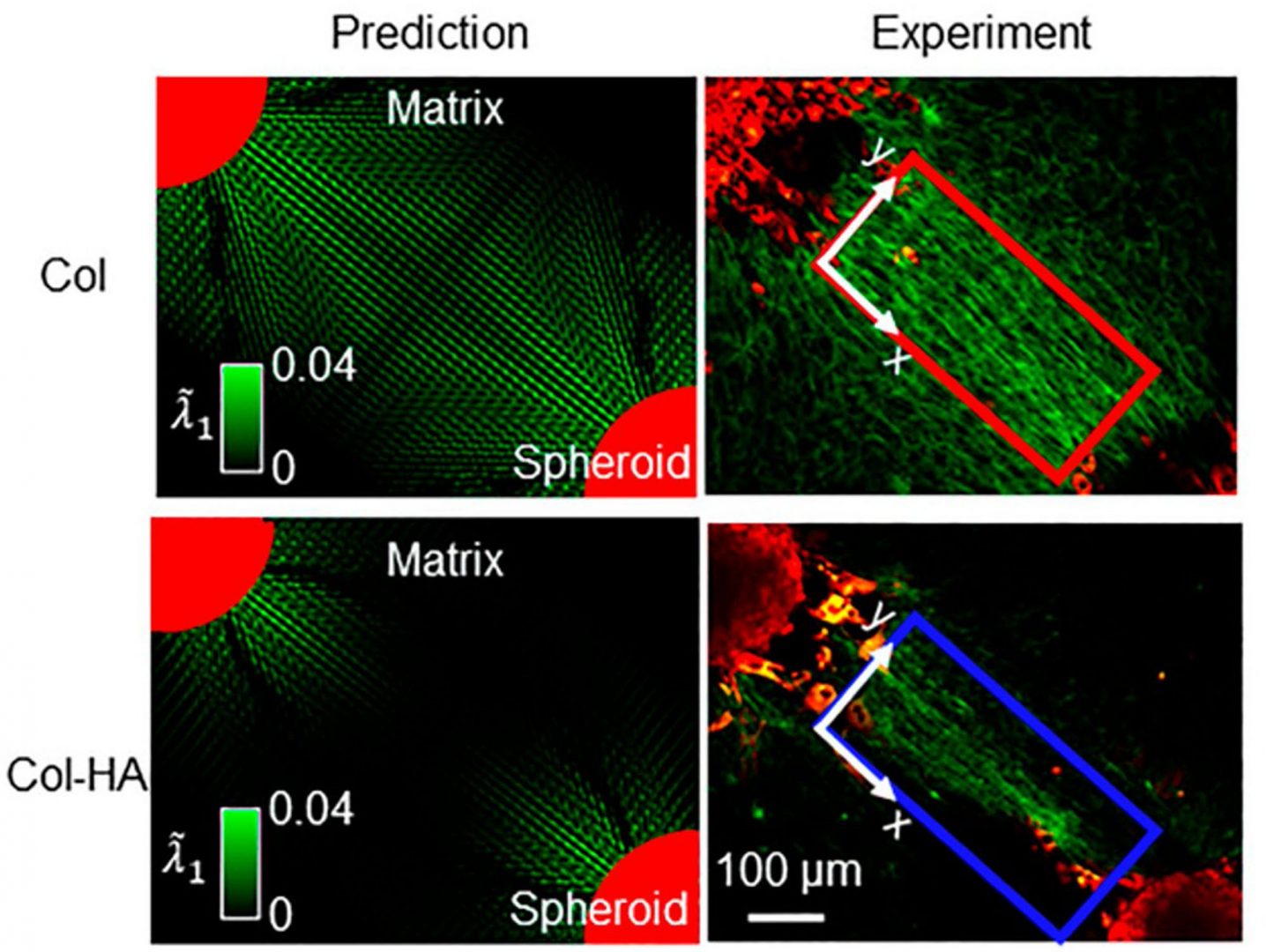
In the presence of GAGs (bottom), collagen networks are better able to resist compression and buckling in the transverse direction. This mechanism reduces collagen fiber alignment in the radial direction and reduces the efficiency of force transmission.
Glycosaminoglycans (GAGs) are abundant, long-chain, highly charged carbohydrates found in the extracellular matrix, but their functional impact on the mechanical behavior of collagen is not understood.
We developed a theory to show that the tissue swelling caused by highly-charged GAGs significantly altered the alignment and organization of collagen networks. Notably, cell-mediated long-range force transmission through collagen networks was decreased in the presence of GAGs. We found excellent agreement between our theory and experiments designed to test the predictions from the theory.
This work has important implications for designing biomaterials with the potential to tune cell-cell communication over distances and is relevant to understanding diseases such as fibrosis and cancer.
Chen X, Chen D, Ban E, Janmey PA, Wells RG, Shenoy VB. PNAS 2022;119: e2116718119.
